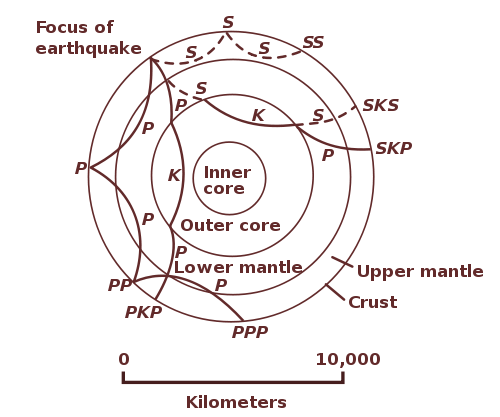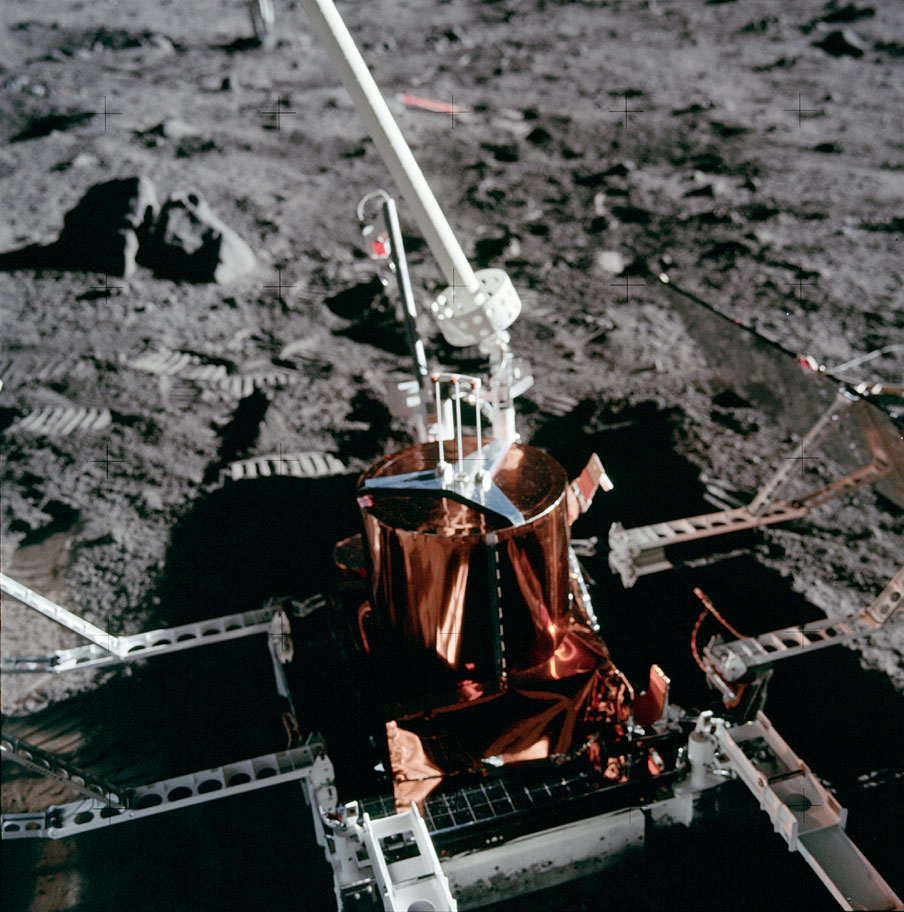Added 1 new A* page:Since Selenis is currently involved in placing some on this mysterious asteroid, let's talk about seismometers! A seismometer is an instrument that measures ground motion, including motion induced by seismic waves. You've probably head of seismometers--or seismographs, which are seismometers with a chart-producing mechanism attached to print a visual readout--being used to measure the power of earthquakes, but scientists can also use them to learn about the interior of a solid body, because seismic waves travel at different rates through different types of matter, and, like light hitting a prism, can even reflect when they hit a boundary between one type of sediment or rock and another. Here's a diagram showing how seismic waves from an earthquake can take different paths through the layers of the Earth, for instance:

image by US Geological Survey (source)
The idea for Selenis to probe the interior of this asteroid came up because humans have actually used seismology to study a body in space before--the Moon! In what is called lunar seismology, NASA astronauts on the Apollo space missions placed seismometers on the Moon between 1969 and 1972. They learned of the existence of moonquakes from these instruments--tremors in the lunar crust caused by tidal forces in its rotation around Earth--as well as information about the Moon's interior. Here are some photos by Neil Armstrong of Buzz Aldrin setting up the first lunar seismometer, during the Apollo 11 mission in 1969:


images by Neil Armstrong for NASA (source)
There's a photo of a prototype of that seismometer, with the cover off so you can see the innards, here. It looks pretty complicated, but the basis of modern seismometers is pretty simple: they keep a mass suspended by electromagnetism, and any jolt to the instrument registers as a precise voltage change in that field.
|
